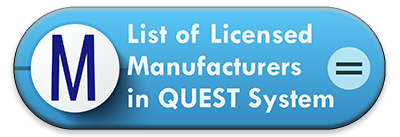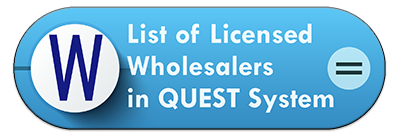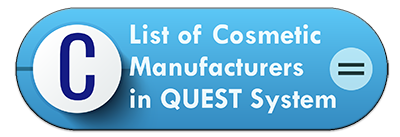This article, originally published on 9 March 2023, has been updated with the latest regulatory decision endorsed on 20 March 2023.
Overview
Pholcodine is an opioid cough suppressant that acts primarily by depressing the cough reflex within the central nervous system, partly through a direct effect on the cough centre in the medulla.1
In Malaysia, pholcodine is classified as a Group C item, which can only be sold as a dispensed medicine with an entry in the Prescription Book.2-3 There are currently 14 pholcodine-containing products that have been registered by the Drug Control Authority (DCA), available in oral liquids and lozenges as single-active ingredient products or in combination with other active ingredients (such as chlorpheniramine, bromhexine, and triprolidine).4 These products are indicated for the relief of unproductive, irritating coughs associated with common colds, sinusitis, influenza, and infections of the upper respiratory tract in adults and children two (2) years of age and above.4-6
Neuromuscular Blocking Agents (NMBAs) are used as muscle relaxants during general anaesthesia.7-8 The NMBA products that are currently registered with the DCA for use in Malaysia include rocuronium, atracurium, cisatracurium, mivacurium, and suxamethonium.4
NMBAs are the most common drugs that can potentially cause perioperative anaphylaxis, which accounts for about 60% of reactions that can lead to perioperative morbidity and mortality.7-8 Quaternary ammonium (QA) groups, essential for the relaxant properties of NMBAs, are considered the main allergenic structures that recognised by IgE antibodies detected in most patients who experience NMBA anaphylaxis.7-9 Classically, this paradigm necessitates prior exposure to induce sensitisation, but many subjects who reacted to an NMBA had no known previous exposure to one of these drugs. This has led to the hypothesis that the sensitisation to NMBAs could be induced by environmental exposure to other compounds with a substituted ammonium ion.
Background of the Safety Issue
In December 2022, the Pharmacovigilance Risk Assessment Committee (PRAC) of the European Medicines Agency (EMA) had recommended the withdrawal of pholcodine marketing authorisation for all pholcodine-containing products.10 This recommendation was based on a thorough review of all available evidence, including the final results of the “Allergy to Neuromuscular Blocking Agents and Pholcodine Exposure” (ALPHO) study9, post-marketing safety data, and information submitted by healthcare professionals.
The available data showed that the use of pholcodine in the 12 months before general anaesthesia with NMBAs is a risk factor for developing an anaphylactic reaction to NMBAs.9-10 Having considered that no suitable risk minimisation measures could be taken to mitigate this risk and that it was not possible to identify a patient population for whom the benefits of pholcodine outweigh its risk, the PRAC concluded a recommendation to withdraw pholcodine from the European market. This recommendation was endorsed by the Coordination Group for Mutual Recognition and Decentralised Procedures—Human (CMDh) and is now being sent to the European Commission for a final decision.10-11
The ALPHO study was a post-authorisation safety study (PASS) carried out as a condition to the marketing authorisations of pholcodine-containing medicines following a previous safety review conducted in 2011.1,9 This multicentric case-control study included a total of 937 patients (167 cases and 334 controls).9 The preliminary results, which were released in June 2022, showed a statistically significant association between exposure to pholcodine in the 12 months before surgery and the risk of perianaesthetic anaphylactic reaction associated with NMBA (adjusted odds ratio (OR) = 4.2, 95% CI [2.3–7.0], p <.01).
Another monocentric case-control study conducted in Western Australia by Sadleir et al. (2021) also identified that both obesity and pholcodine consumption remained as important risk factors for NMBA anaphylaxis after correction of confounding, with pholcodine consumption associated with a very significant risk of anaphylaxis to NMBAs (adjusted OR = 12.7, 95% CI [3.8–43.1], p <.001).7
The mechanism by which pholcodine exposure triggers the risk of anaphylaxis to NMBA remains elusive.1,7-9 However, the consistent findings from the ALHPO study and the previous Australian study support the pholcodine hypothesis, which proposes that cross-reactivity between substituted ammonium ions present in pholcodine and NMBAs may prime IgE-mediated allergic reactions to NMBAs.
Adverse Drug Reaction Reports12
To date, the NPRA had received a total of 12 reports with 17 adverse events suspected to be related to pholcodine-containing products. No local cases of anaphylactic reactions to pholcodine-containing products have been reported thus far. However, there were rash (1 case), rash macular (1), urticaria (1), and breathing difficulty (1) being reported. The most frequently reported adverse event was diarrhoea (2).
The NPRA had received 204 reports with 316 adverse events suspected to be related to NMBA products registered in Malaysia (i.e., rocuronium, atracurium, cisatracurium, mivacurium, and suxamethonium), which included anaphylactic shock (32), anaphylaxis (7), and anaphylactic reaction (3). However, the patients' previous exposures to pholcodine-containing products were unknown and pholcodine was not stated as a concomitant or co-suspected drug in any of the cases.
[Regulatory Updates] Cancellation of Product Registration and Product Recall
The NPRA has completed a review of this safety issue and concluded that the risk of pholcodine use outweighs its benefits. On 20 March 2023, the DCA made a decision to cancel the registration of all products containing pholcodine in Malaysia with immediate effect. All stocks of pholcodine-containing products are being recalled up to the level of consumers/end-users. For further details, please refer to your local salesperson or supplier of products containing pholcodine.
Advice for Health Care Providers
- Findings from recent clinical studies show that exposure to pholcodine 12 months before general anaesthesia with neuromuscular blocking agents (NMBAs) administration is associated with a significant risk of anaphylaxis towards the NMBAs.
- Take note of the recall of all products containing pholcodine and immediately stop prescribing, dispensing, selling, or distributing all such products. All remaining stocks of products containing pholcodine must be quarantined and returned to the supplier.
- Inform patients that these products will no longer be available for use as a precautionary measure due to safety concerns and consider recommending appropriate alternative treatments to manage non-productive coughs.
- For patients scheduled to undergo clinical procedures requiring the administration of NMBAs,
- Advise patients to inform the anaesthesiologist if they have a history of pholcodine use before undergoing surgery.
- Check the medication history of the patients to identify if they have taken pholcodine in the past 12 months, as well as any other risk factors (such as obesity), and if so, maintain awareness of potential anaphylactic reactions to NMBAs in these patients.
- Report all suspected adverse events associated with NMBA- or pholcodine-containing products to the NPRA.
Advice for Health Care Providers to Provide to Patients/Consumers
- If you are taking cough and cold medications, it is important to check the label or package insert of the product to see if it contains pholcodine. If the product contains pholcodine, you are advised to stop and seek alternative treatment from a health care provider.
- If you need to undergo surgery that requires general anaesthesia, it is necessary to inform health care providers if you have ever taken medication containing pholcodine, especially within the past 12 months.
References:
- European Medicines Agency (EMA) & French National Agency for Medicines and Health Products Safety (ANSM). Pholcodine-containing medicinal products Article-107i referral - Rationale for triggering [Internet] 2022 Aug [cited 2022 Jan 05]. Available from: https://www.ema.europa.eu/en/documents/referral/pholcodine-containing-medicinal-products-article-107i-referral-rationale-triggering_en.pdf
- Pharmaceutical Services Programme. Poisons List First Schedule [Internet]. 2022 Oct [cited 2023 Mar 2]. Available fromhttps://www.pharmacy.gov.my/v2/sites/default/files/document-upload/poisons-list-1.9.2020_2.pdf
- Malaysia Regulatory Classification [Internet]. MIMS; 2023 Mar [cited 2022 Mar 2]. Available from: https://www.mims.com/malaysia/viewer/html/poisoncls.htm
- National Pharmaceutical Regulatory Agency (NPRA). QUEST3+ Product Search [Internet]. 2022 [cited 2023 Mar 2]. Available from: https://www.npra.gov.my
- National Pharmaceutical Regulatory Agency (NPRA). DURO-TUSS® Expectorant Cough Liquid (pholcodine) [Package Insert]. QUEST3+ Product Search. 2019 Oct [cited 2023 Mar 2]. Available from: https://www.npra.gov.my
- National Pharmaceutical Regulatory Agency (NPRA). PROMEDYL PLUS LINCTUS (pholcodine & chlorpheniramine maleate) [Package Insert]. QUEST3+ Product Search. 2021 Feb [cited 2023 Mar 2]. Available from: https://www.npra.gov.my
- Sadleir PHM, Clarke RC, Goddard CE, Day C, Weightman W, Middleditch A, et al. Relationship of perioperative anaphylaxis to neuromuscular blocking agents, obesity, and Pholcodine consumption: A case-control study. British Journal of Anaesthesia. 2021;126(5):940–8. Available from: https://pubmed.ncbi.nlm.nih.gov/33454050/
- Brusch AM, Clarke RC, Platt PR, Phillips EJ. Exploring the link between Pholcodine exposure and neuromuscular blocking agent anaphylaxis [Internet]. British Journal of Clinical Pharmacology. 2014;78(1):14–23. Available from: https://www.ncbi.nlm.nih.gov/pmc/articles/PMC4168376/
- Mertes PM, Petitpain N, Tacquard C, et al. Pholcodine consumption increases the risk of perioperative anaphylaxis to neuromuscular blocking agents: the ALPHO case-control study [Preprint]. Available from: https://doi.org/10.1101/2022.12.12.22283353
- European Medicines Agency (EMA). Meeting highlights from the Pharmacovigilance Risk Assessment Committee (PRAC) 28 November - 1 December 2022 [Internet]. 2022 Dec 22 [cited 2023 Jan 05]. Available from https://www.ema.europa.eu/en/news/meeting-highlights-pharmacovigilance-risk-assessment-committee-prac-28-november-1-december-2022
- European Medicines Agency (EMA). Pholcodine-containing medicinal products [Internet]. 2022 Dec [cited 2023 Mar 2]. Available from https://www.ema.europa.eu/en/medicines/human/referrals/pholcodine-containing-medicinal-products#:~:text=On%201%20December%202022%2C%20EMA's,the%20revocation%20of%20the%20EU
- National Pharmaceutical Regulatory Agency (NPRA). The Malaysian National ADR Database (QUEST) [Internet]. 2023 [cited 2023 Jan 05]. Available from: https://www.npra.gov.my (access restricted)
DISCLAIMER
This publication is aimed at health professionals. The information is meant to provide updates on medication safety issues, and not as a substitute for clinical judgment. While reasonable care has been taken to verify the accuracy of the information at the time of publication, the NPRA shall not be held liable for any loss whatsoever arising from the use of or reliance on this publication.
Written by: Noor'ain Shamsuddin
Reviewed/Edited by: Choo Sim Mei, Lim Sze Gee, Norleen Mohamed Ali














